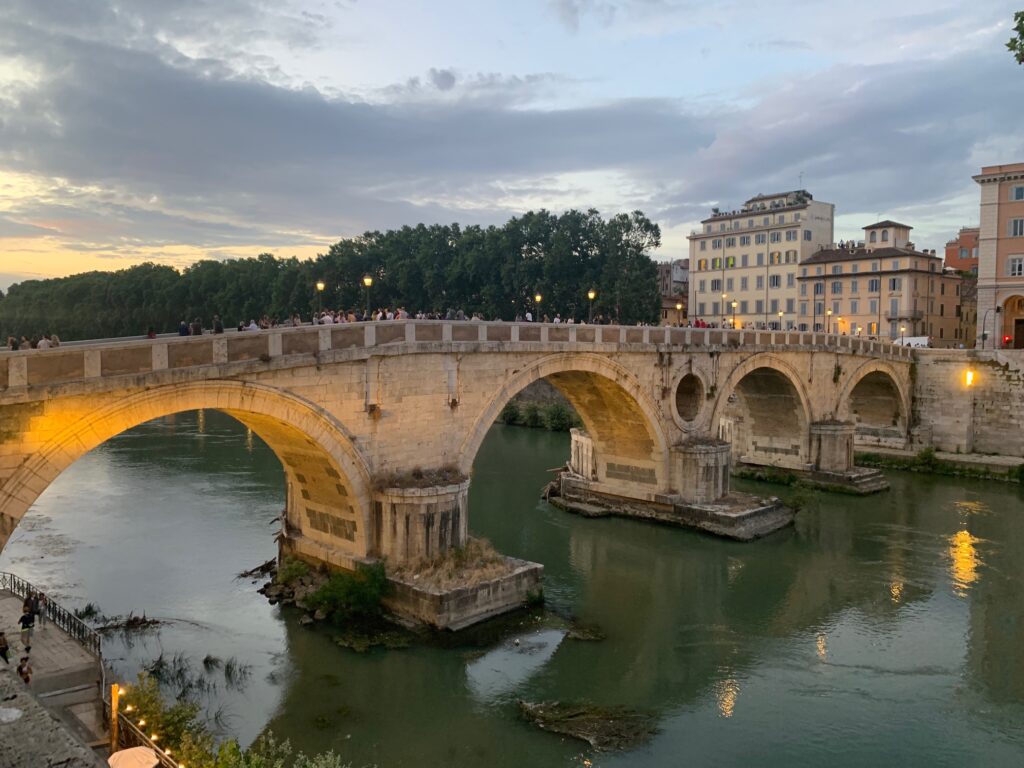
Farewell, Ponte Farnese. Sei durato meno di un gatto in tangenziale.
This was the tweet I came across one day following my failed attempt to go and see a bridge made of cardboard that was temporarily suspended over the Tiber River.
“Farewell, Farnese Bridge. You lasted less than a cat on the highway.”
The concept, in my mind, was a clever one. Supported by the French Embassy in Rome and launched on the eve of Bastille Day, the bridge would be a cardboard realization of a bridge designed by Michelangelo 500 years ago. And the final result was indeed a photographer’s treat—suspended over Rome’s river by three helium balloons, the temporary art was to remain in place until today, 18 July. You can see a short video of the general process and finished result here.
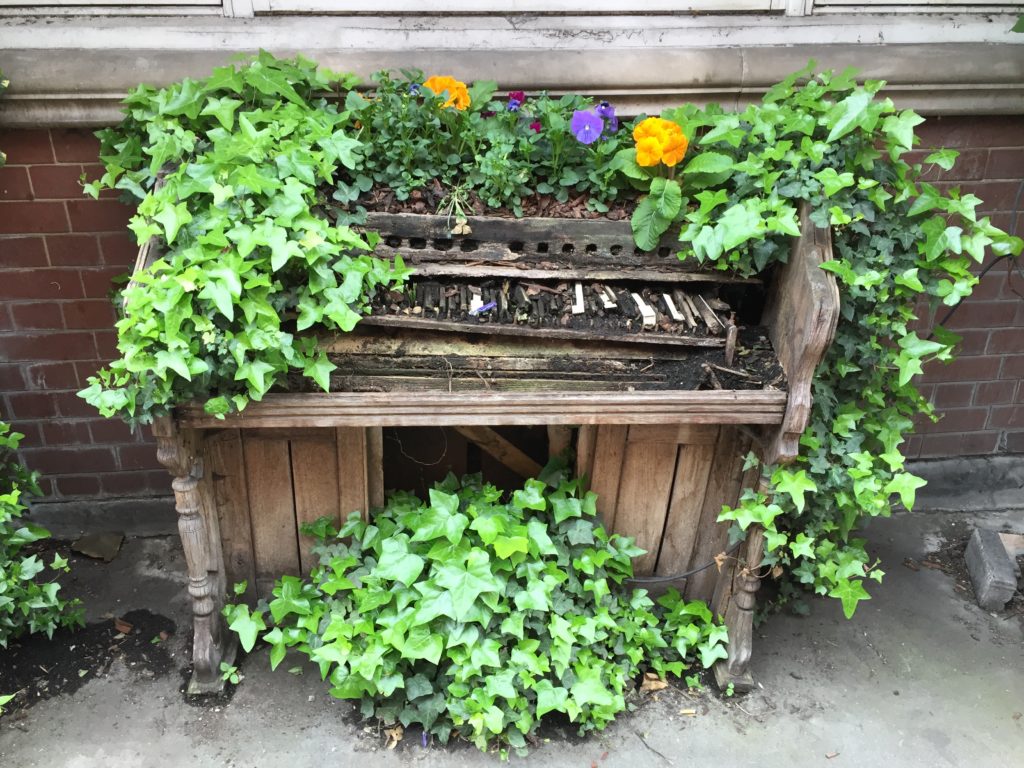
Perhaps the reasoning is wrong, but I especially enjoy public art of an ephemeral nature. The fact that it won’t be around forever gives you the kick in the ass needed to get out and have a look. Appreciate something that you don’t pass everyday—or indeed something that clashes a bit with what you interpret as conventional. While living in London, I recall paying a special visit to Hyde Park in order to experience Christo and Jeanne-Claude’s Mastaba as it floated in the Serpentine Lake for a handful ow weeks. The 7,500 neon-colored barrels stacked up looked like something out of Q*bert—something you definitely don’t see every day. It wasn’t overly complex, but all the same it made me smile.
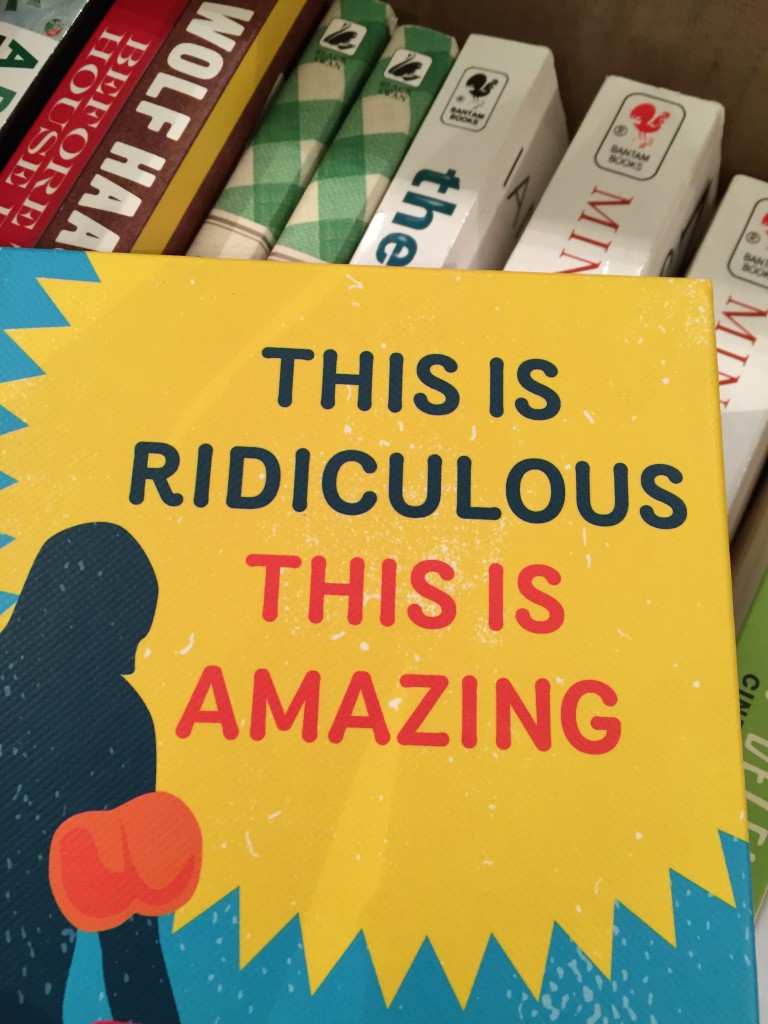
Recreating Michelangelo’s bridge, however, indeed looked like a complicated affair. Many pairs of hands plotted and labored to build and tape together many small geometric shapes made of cardboard. Somehow they would all be carried to the side of a river and then hoisted aloft. And only for a few days. A flying bridge- one that will never serve any purpose other than to delight the imagination—and then it would be gone.
But I have spoiled the ending of the bridge’s story for you already. The Farnese Bridge didn’t even make it as long as the advertised 18 July date. I kind of had this feeling, the day that I was planning to go since the sky opened up with furious rain several times. If I know a cardboard box in the rain—and I definitely do—this triumph of imagination would already be looking like a collapsed floating bridge. If such a thing were possible.
A few weeks ago, I also visited a temporary exhibition at the Museum of Rome. The exhibit walks the viewer through many periods of Rome’s history from 1875—but the one that really got me was the story of the Spina di Borgo’s demolition.
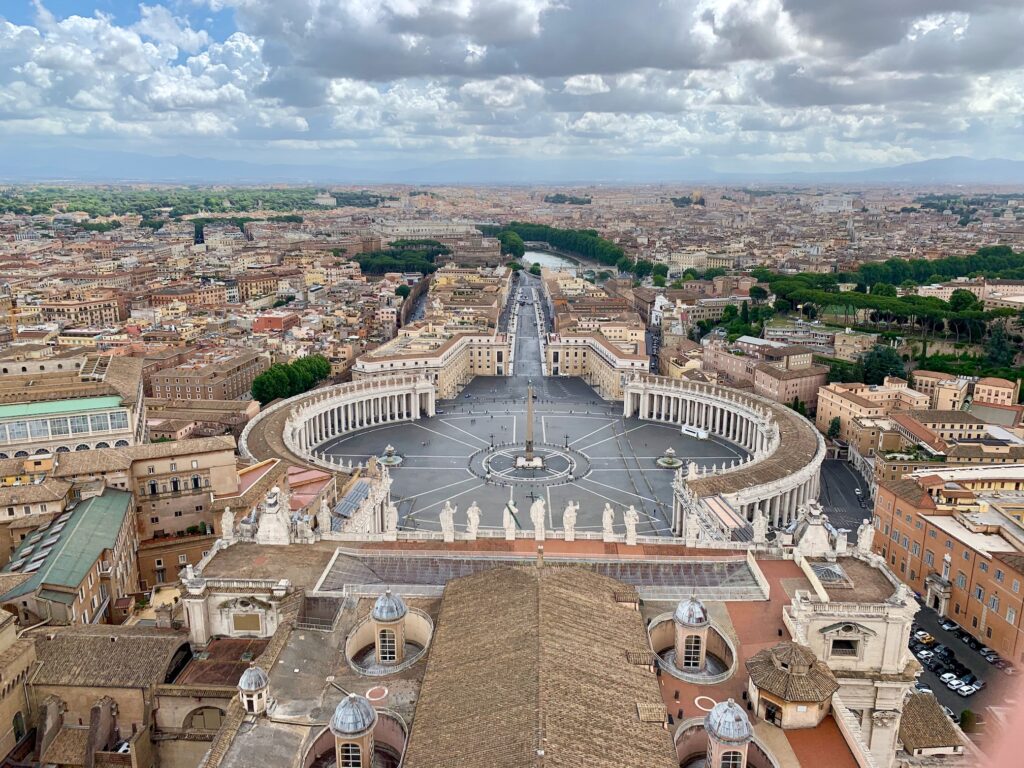
If you’ve ever walked up Via della Conciliazione—the generously spacious and majestic road that connects Saint Peter’s Square to the Castel Sant’Angelo—then you’ve been on the grounds of what was Spina di Borgo. Before 1936, this was a small neighborhood with a number of notable places—churches, palaces, people living their lives—and under Mussolini’s tenure, he finally realized several unexecuted plans to demolish the area. The resulting road, Via della Conciliazione, was more or less a commemoration of the Lateran Treaty. It became a stretch of terrain that symbolically linked Rome to Vatican City (hence the name: Road of the Conciliation). There’s an interesting podcast on the Via itself here.
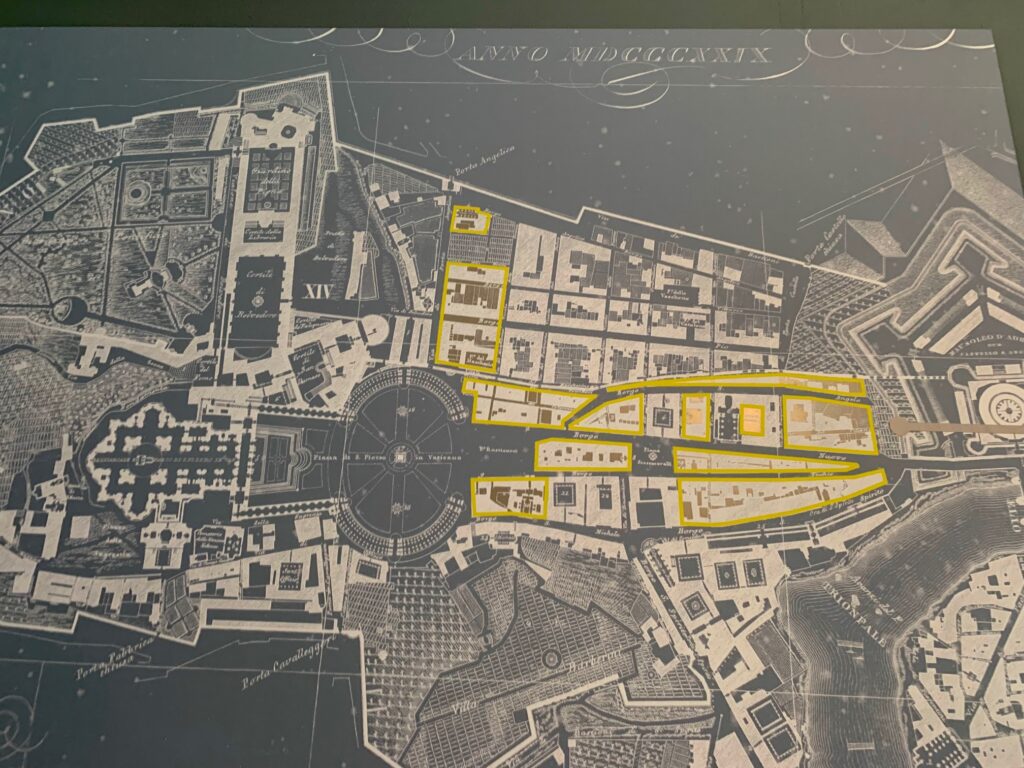
The exhibit on the deconstruction of the Spina di Borgo included old timey Luce motion pictures of the painstaking demolition process. Facades of heavy buildings were slowly picked away, row houses gradually gone with the occupants to be moved out of the city’s heart without much say so. Also in the exhibit, there were frescos that must have been painstakingly chiseled away from the structures that were unceremoniously destroyed. The art fragments that endure to me look as important as the pieces that still hang in churches. I know that Rome in particular is overflowing with Stuff Worth Saving—but the idea that a small community was effectively bulldozed made me feel nostalgic for a place that I never experienced.
Despite the storm cells of rain, on Friday I still went down to the Tiber River right near Ponte Sisto. This was the still-advertised site of the floating bridge…and if anything, maybe I could at least get a glimpse of the remnants. The late evening had turned from dark to ethereal—the pastel color-y kind of night you are always treated to following a violent late afternoon storm. Down in Trastevere, the neighborhood was vibrant with Friday night summer celebrants. We jockeyed for position on Ponte Sisto as it was full of musicians and folks hanging around the bridge to watch the nightlife.
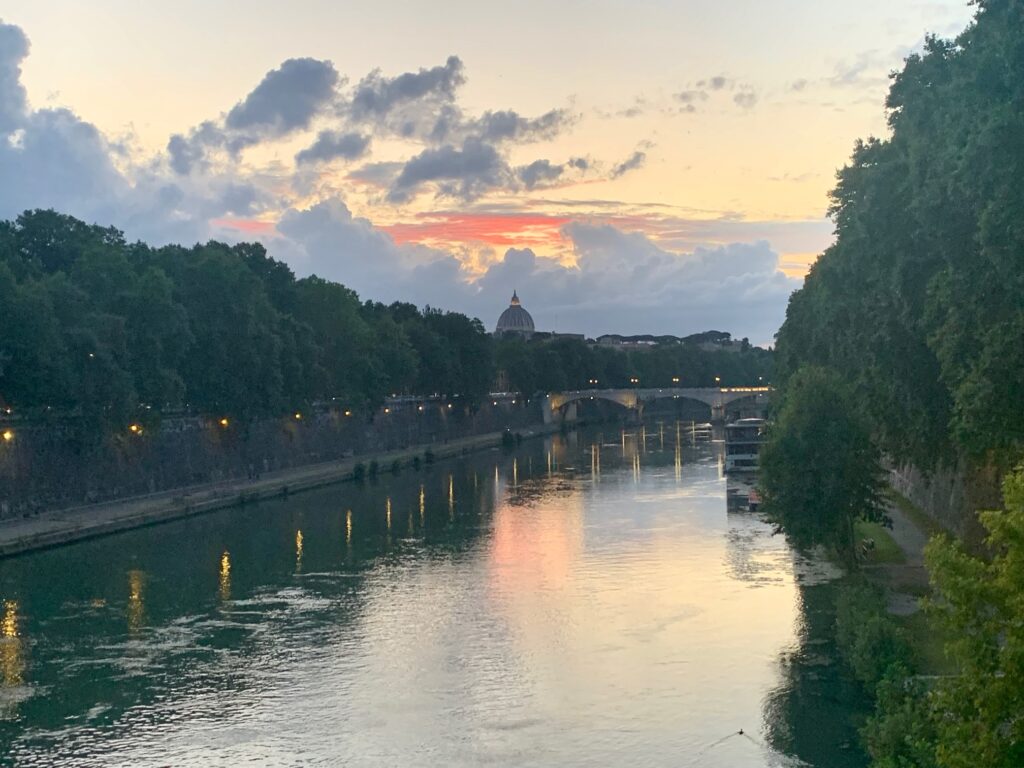
Perching over the bridge’s edge, I looked out onto the river and to its bend in an attempt to pinpoint the floating bridge’s location. Nothing. I looked again at the photos online. I tried and match up where I stood with what I was supposed to be seeing. Nothing. Only your typical intoxicating summer Roman night. Couples sped by on motorinos along the Lungotevere while maskless groups of friends congregated at outdoor tables with drinks in hand.

I noticed that a couple next to me was also looking for the floating bridge. They too were looking at their phones, and then looking up again squinty-eyed with more renewed determination as if this were some kind of Magic Eye portrait. But it was clear that this exhibit had finished. Likely because of the rain, but nobody could be exactly sure since all of the websites and social media heralding its creation were not so quick to promote its hasty removal.
On Saturday morning I found no shortage of short videos online documenting the premature destruction of the bridge on account of “meteorological conditions”. I also came across that elegiac tweet mourned its short-lived life over the Tiber—in addition to other disappointed but eager folks who were interested in the delightful yet surprising piece of art.
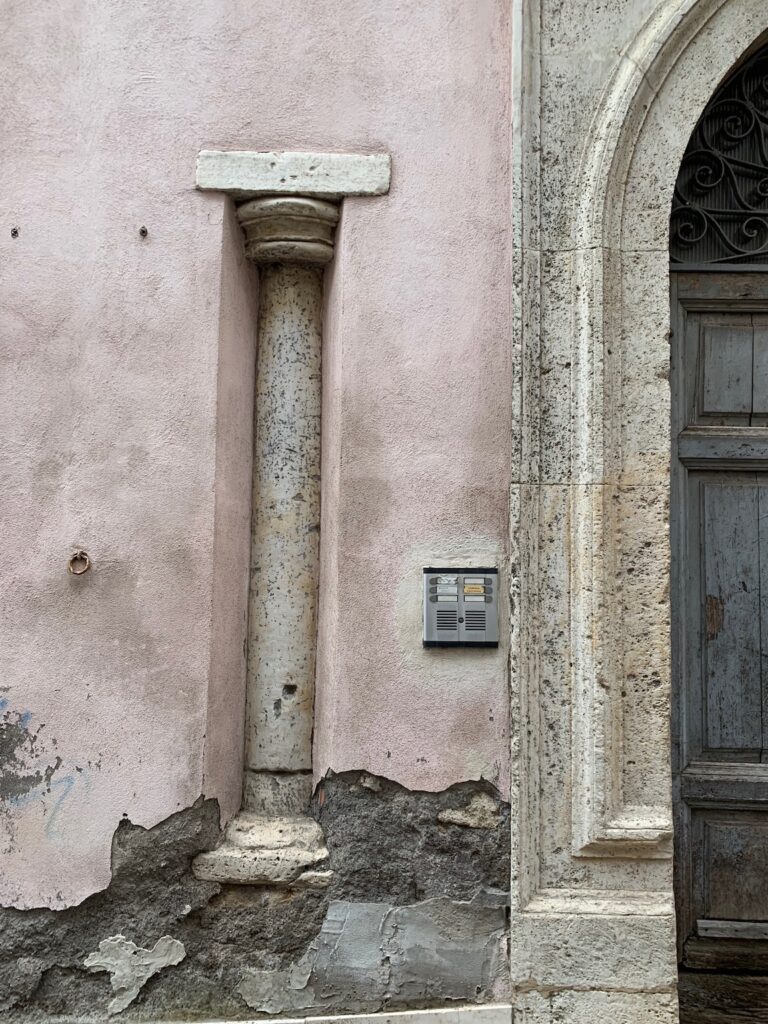
You think about Rome and you remember that it is called The Eternal City. And in many ways, of course it is. On the other hand, when you pass buildings with facades including pillars that seem to be have been smooshed into the wall, you also acknowledge that not everything can be preserved. Not every village, not every building. Not the cardboard artwork and indeed not even all of the more durable pieces. I may not have been able to check out France’s depiction of Michelangelo’s Farnese Bridge because Mother Nature had her opinions—but every day I still get to see all kinds of neat stuff. At the end of the day, everything is ephemeral. It’s worthwhile to get out and see anything you can.